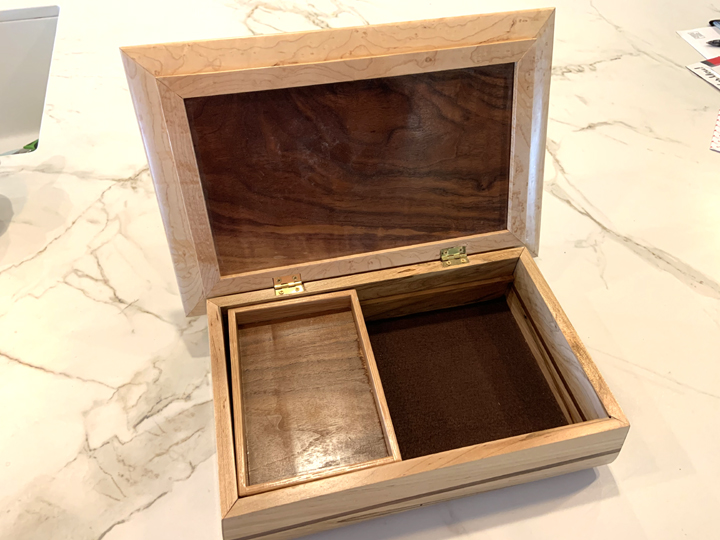

Ambrosia Maple and Walnut Box - 108
Measures 14"w x 9"d x 5 "h $100


Maple Ambrosia – Found primarily in temperate regions in the Northern Hemisphere. The majority of ambrosia maple is found in species of soft maple. T he ambrosia character in the maple wood is caused by a beetle which bores through the living wood, carrying a fungus on its legs/carapace that is deposited on the wood fibers. As the sap continues to flow through the tree, it causes the fungus to spread out through the wood from the small holes carved by the beetle. This ambrosia fungus, which gives the wood its name, causes discoloration in the maple lumber ranging through various shades of brown, but sometimes including orange, pink, green, and light purple. When boards are flat-sawn from these logs, the ambrosia signature is accentuated, and the wood achieves a highly unique appearance with a distinctly rustic nature. Although created by this combination of beetle and fungus activity, ambrosia maple is sometimes referred to as "wormy" maple.
Walnut – From Eastern United States. Heartwood can range from a lighter pale brown to a dark chocolate brown with darker brown streaks. Color can sometimes have a grey, purple, or reddish cast. Black walnut is important for its attractive timber, which is hard, dense, tight-grained and polishes to a very smooth finish. When kiln-dried, walnut wood tends toward a dull brown color, but when air-dried can become a rich purplish-brown. Because of its color, hardness and grain, it is a prized furniture and carving wood. Veneer sliced from walnut burl is one of the most valuable and highly prized by cabinet makers and prestige car manufacturers. Walnut is also used by makers of stringed instruments such as the violin and guitar and for the body of pipe organs.